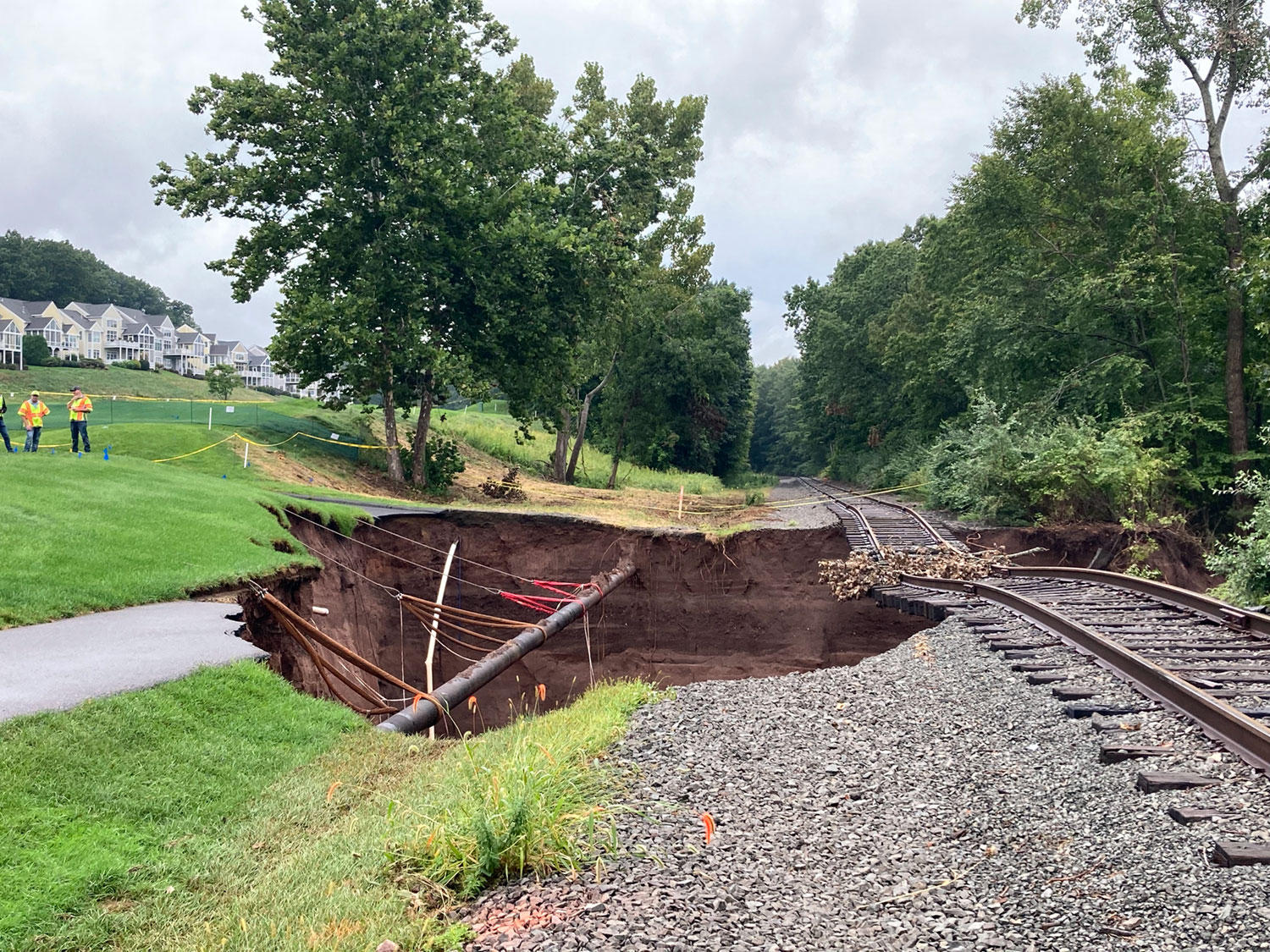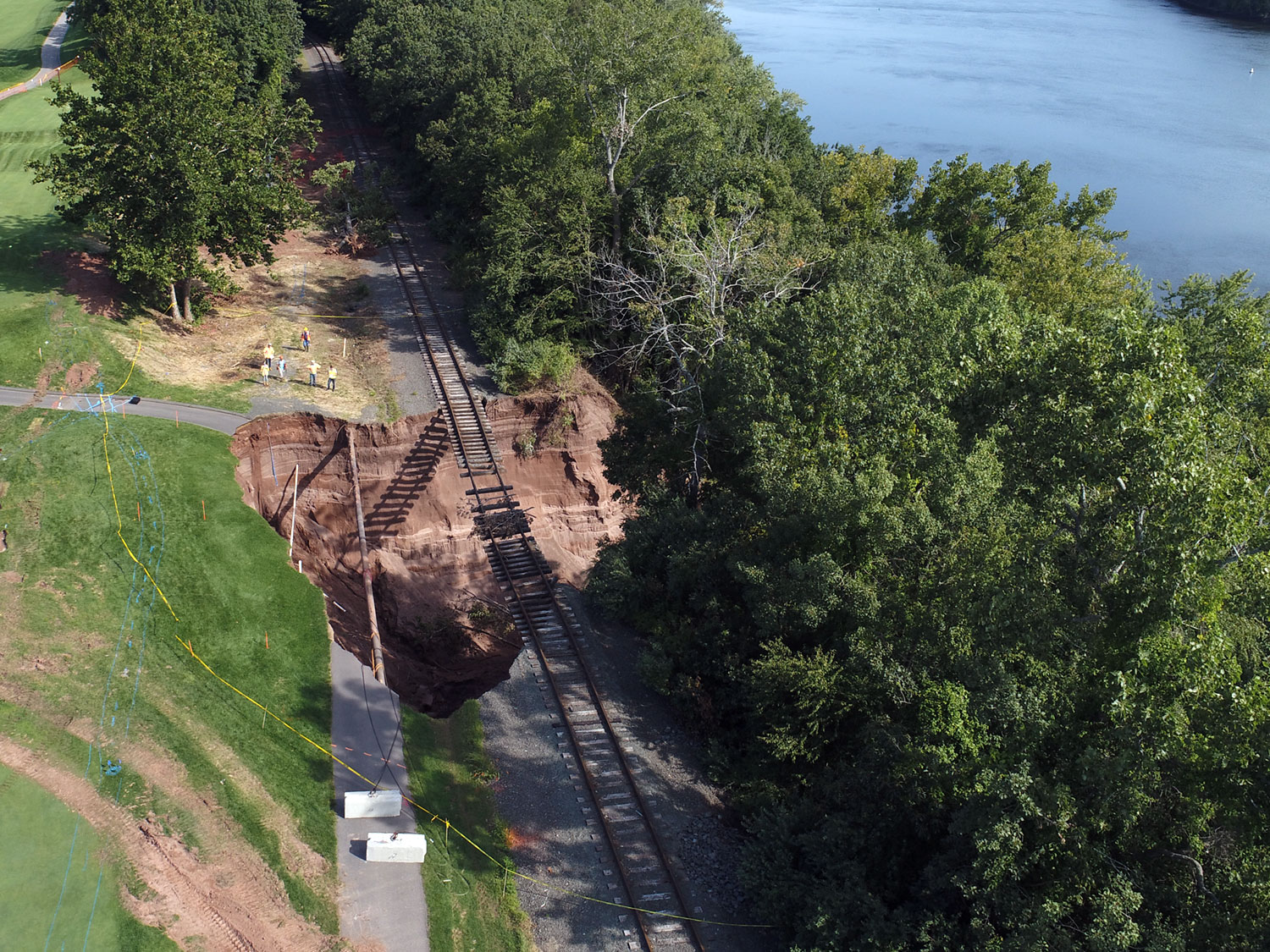Serving as the geotechnical consultant, we coordinated and oversaw a subsurface exploration program for the project which included two soil borings to depths of approximately 100 feet beneath existing grades. Our analysis and design were performed using methods developed by the Federal Highway Administration. The design utilized mechanical reinforcement (i.e., geosynthetics) to improve the stability of the reconstructed slope against global and surficial stability failure. GEODesign applied its extensive experience in slope stability analysis and reinforced slope design to develop a cost-effective design which could be safely and efficiently implemented in the short timeframe required by the urgent nature of the project. Challenges included a very tight design and construction schedule, the needs for close cooperation with ConnDOT, the railroad, the golf course, the jet fuel utility company, and the need for careful planning of construction access and crew safety across the steep slope within the repair area.
The Solutions Unearthed
- The results of our subsurface exploration indicated that the on-site soils predominantly consisted of fine- to medium-grained sands which are prone to erosion. Our analysis suggested that the heavy precipitation which preceded the landslide, together with possible local drainage features recently installed without proper slope protection, likely resulted in significant erosion along the face on the slope. The soil loss initiated along the face of the slope due to erosion along with saturated soil conditions likely resulted in a progressive global failure.
- The repair design included compacted imported fill stabilized with uniaxial geogrid. The final design specified primary geogrid reinforcement with minimum lengths of 35 and 42 feet installed at 32-inch vertical spacing.
- Secondary geogrid reinforcement was also specified to improve the stability of the reconstructed slope face. The secondary geogrids consisted of 6-foot long uniaxial geogrid at 16-inch vertical spacing.
- We also recommended erosion control and drainage improvements to redirect surface water runoff away from the face of the slope. Designed by other member firms of the project team, these improvements included rip rap along the face of the slope, a swale/headwall at the crest of the slope, drainage pipes/manholes along the face of the slope, and a new outfall at the toe of the slope.
Client: Connecticut Department of Transportation | H.W. Lochner, Inc.













